- Jewels for Democracy and Contemporary Tiaras are among the many exhibitions and events at the 2nd Lisbon Contemporary Jewelry Biennial, which takes place through September 2024
- 2024 marks 50 years of democracy in Portugal. This inspired the biennial’s theme
- Exhibitions, colloquiums, and masterclasses explore the connection between jewelry and politics, power and policy
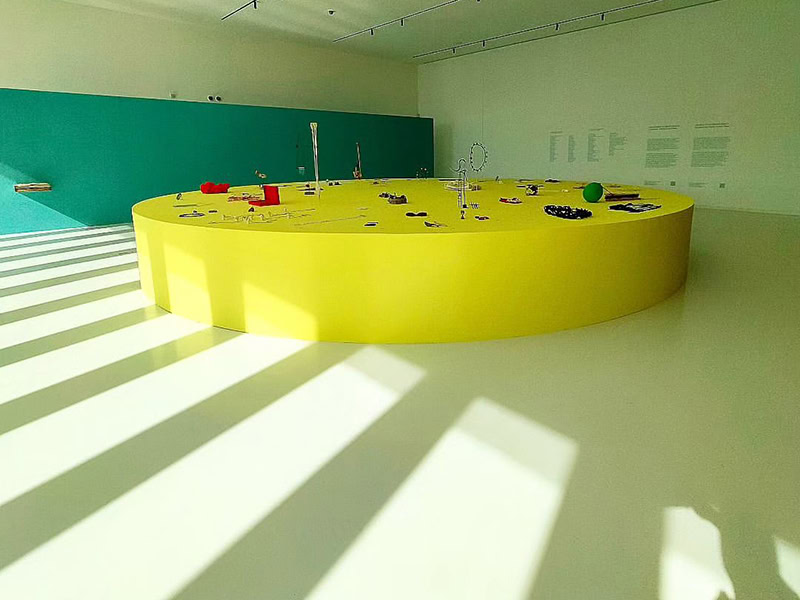
The Jewels for Democracy exhibition is on view at Lisbon’s Royal Treasure Museum. It is as much a testimony to the power of contemporary jewelry as it is about the importance of political freedom.
A tribute to the women who during the dark decades of the country’s authoritarian rule fought in different ways for democracy and democratic values, it is also a joyful celebration of the human spirit.
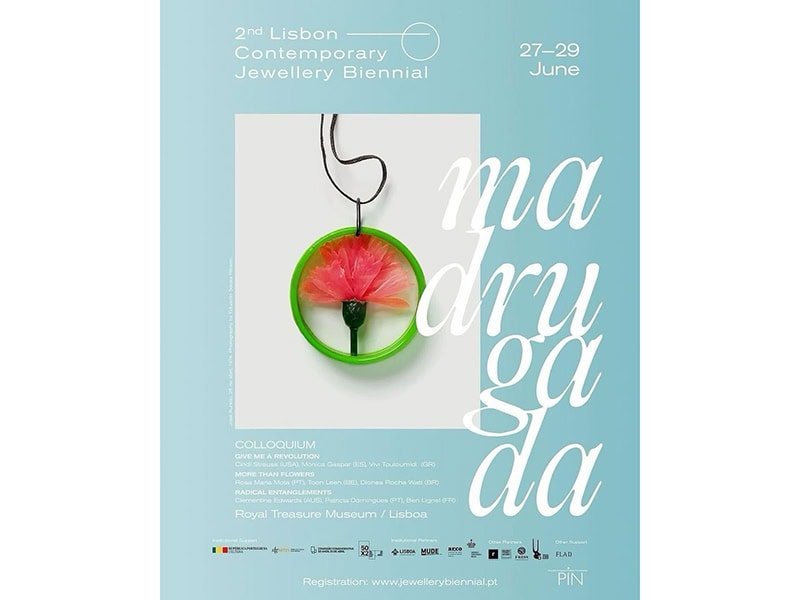
The exhibition’s curator, Marta Costa Reis—a jeweler, academic, and AJF board member—was a child during Portugal’s Carnation Revolution of 1974. But she remembers it clearly as a time of happiness and openness. This feeling is something she has tried to tap into in this show. The exhibition is the centerpiece of the 2nd Lisbon Contemporary Jewelry Biennial, entitled “Madrugada (Daybreak).” A program of other events continues through June.
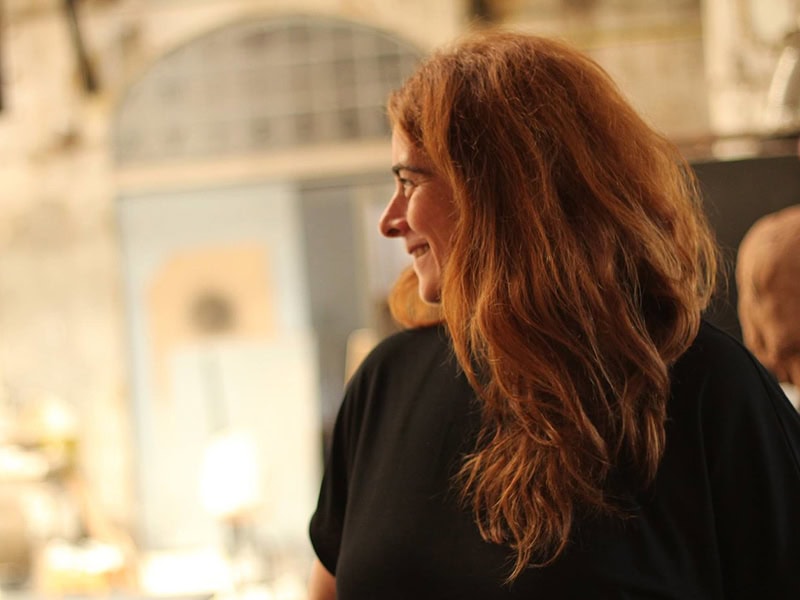
The backdrop to all of this is the revolution itself. It is remembered and celebrated in different ways across the country. April 25, now known as Freedom Day in Portugal, is a public holiday and the date of the military coup that saw a group of junior military officers bring down the Estado Novo government. The event is called the Carnation Revolution. Its name refers to the flowers handed out to the soldiers by demonstrators, as the populace took to the streets to greet what turned out be a bloodless revolution.
This year is particularly special—2024 marks 50 years of Portugal’s democracy. The number represents a huge achievement for the country, but in the great sweep of history still sounds fragile. Recent political events in the country have seen the rise of right-wing populism. This was very much in the minds of many of the exhibition visitors and makers at the show’s opening in April.
Its setting in the Royal Treasure Museum could not be more fitting. The museum forms the new wing of the Ajuda National Palace, built to house the country’s extraordinary collection of crown jewels and other treasures of the former royal house. It is worthy of a visit in its own right. The museum’s opulent contents are a reminder of centuries of state power and privilege. They form a wonderful display of the traditions of the finest craftsmanship, complete with eye-popping gemstones.
Set against this are the 60 items of jewelry that make up the Jewels for Democracy show. Members of the Portuguese Association of Contemporary Jewelry (also known as PIN) created all the pieces. Each one celebrates a significant woman.
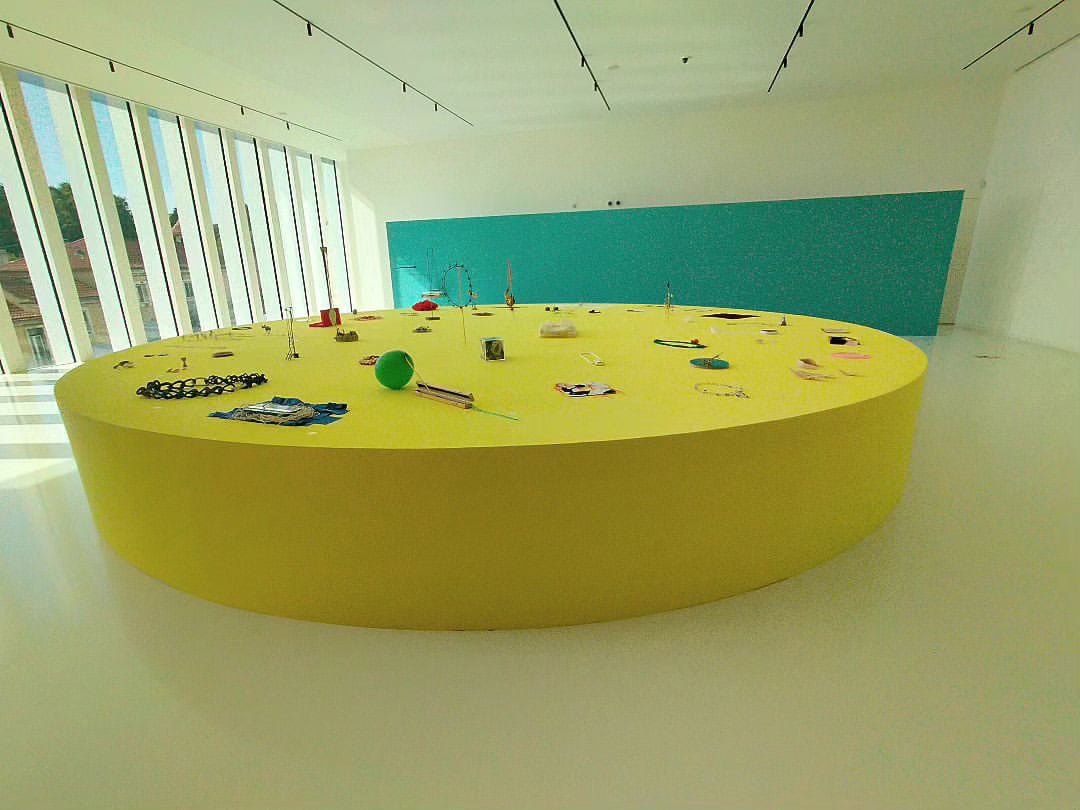
The first thing you notice upon entering the exhibition is the democracy inherent in the display. All the pieces are laid out on a vast circular table. It is painted a sunshine yellow. The color instantly evokes the feeling of celebration. The jewelry itself is a wonderful eclectic mix of approaches to the brief. Here you will find the whole range of styles of contemporary jewelry—from the use of precious to non-precious materials, and from the intellectual to the emotional, performative, sculptural, and decorative.

Several of the pieces nod, literally or obliquely, to the carnations that have come to symbolize the revolution. One example: Union, by Inês Nunes. The striking, tactile arrangement of vibrantly red microphone windscreens held together by magnets is a tribute to Maria de Lourdes Pintasilgo. In 1979 she became Portugal’s first and only female prime minister and later its first ambassador to UNESCO.
In stark contrast is Anton Kuzmin’s spiky, talismanic Conscience Choker. Made of silver and enamel, it was inspired by an anti-war poster created by Elena Osipova in his native Russia. She is an artist and political activist who was arrested for expressing opposition to the invasion of Ukraine. “At 78 years of age she continues to express her position and draws posters,” says Kuzmin. “The choker represents the pain of expressing yourself in public.”
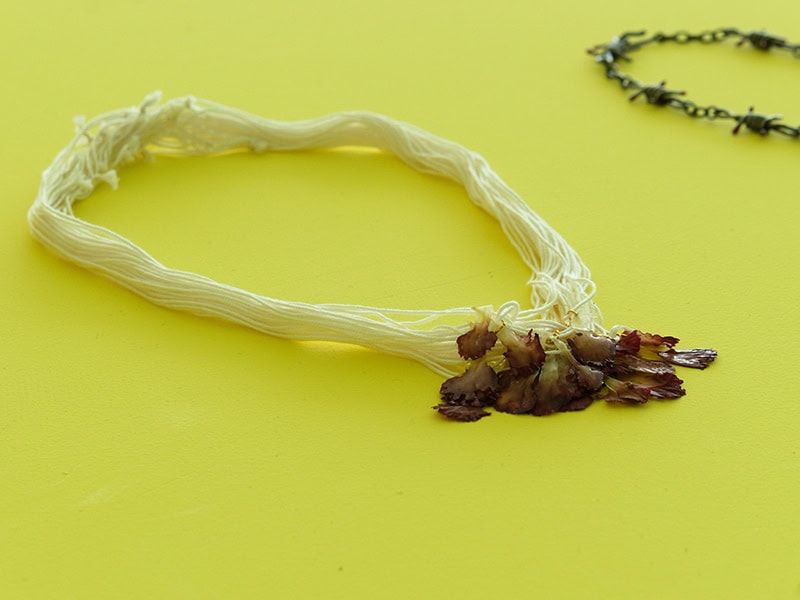
There are quiet pieces too. One of the most touching is a necklace by student jeweler Barbara Macedo. This tribute to her grandmothers is made from the petals of two red carnations, resin, brass, and cotton thread. Says Macedo, “The greatest inheritance I received from my grandmothers was freedom, and I am very grateful for their struggle, so that today, like them, I can be a free woman.”
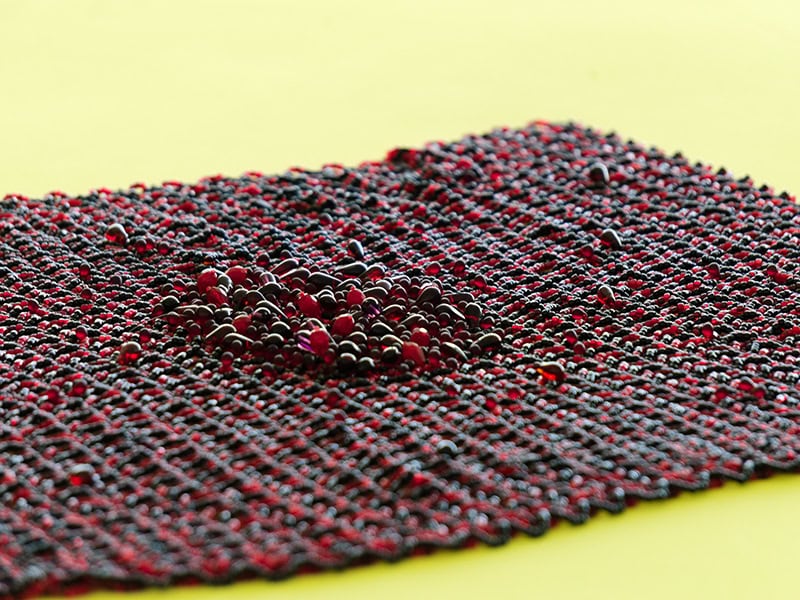
Jeweler Caterina Silva has created a piece made from wine-red glass beads with a darker center like a wound. She made it in honor of Aurora Rodrigues. Rodrigues was a member of the Portuguese Workers’ Communist Party and a law student imprisoned several times for opposing the government. Silva describes her as “an example of strength and dedication in the fight for democracy.”
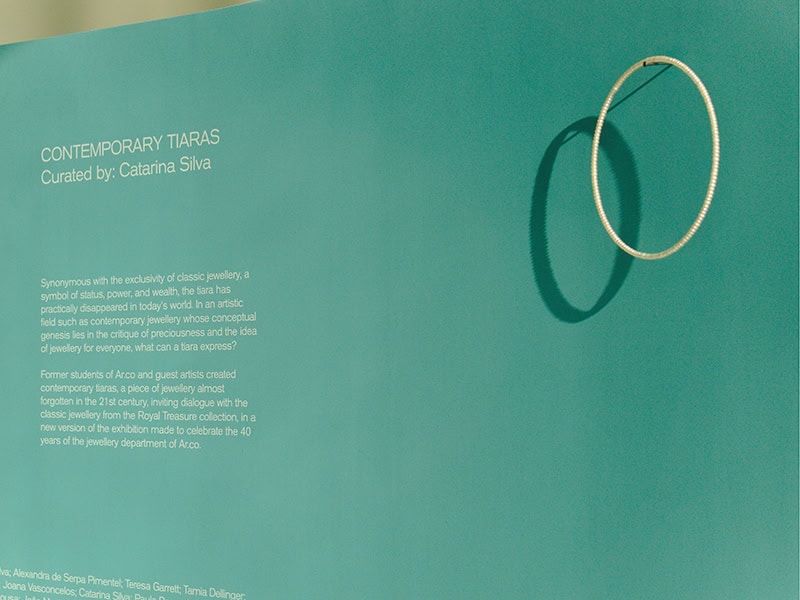
Silva not only contributed to Jewels for Democracy, she is also the curator of its companion exhibition at the Royal Treasure Museum, Contemporary Tiaras. In it, 40 headpieces made by students at Ar.Co. (the Center for Arts and Visual Communication in Lisbon) are joined by work from invited artists, many with notable names. The student works were first shown in 2019 to celebrate the Ar.Co. jewelry department’s 40th anniversary.

Most of the tiaras are displayed in showcases that run around the outside wall of the vast vault that sits in the center of the museum. The vault, with its five-ton steel doors, has a beautiful outer casing of gold-coated aluminum with the open texture of a honeycomb.
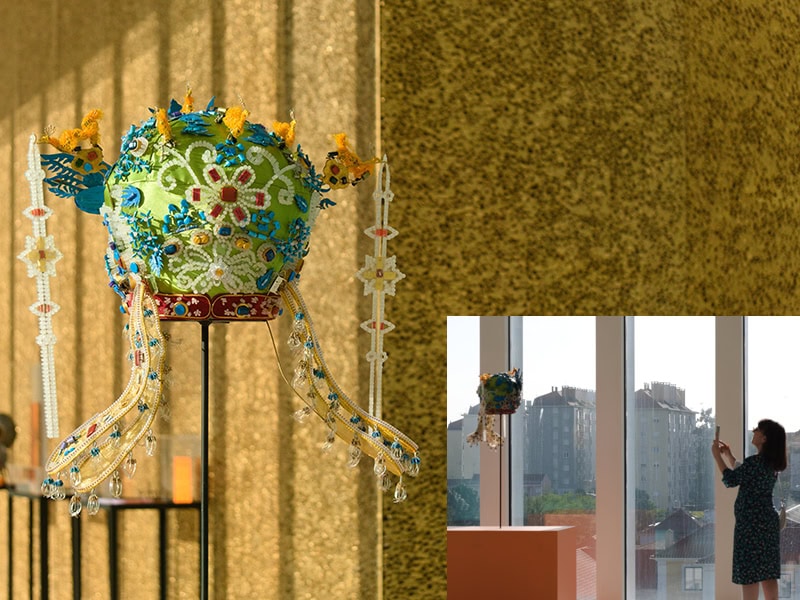
There is plenty of visual playfulness on show. With his tiara of hearts, David Bielander shows his remarkable ability to make silver and white gold look like stapled sections of corrugated cardboard. Xinyi Chen’s creation, meanwhile, is a dramatic futuristic Chinese phoenix coronet made from electronic waste, as well as discarded fruit packaging, leather, fabric, and polyethylene.
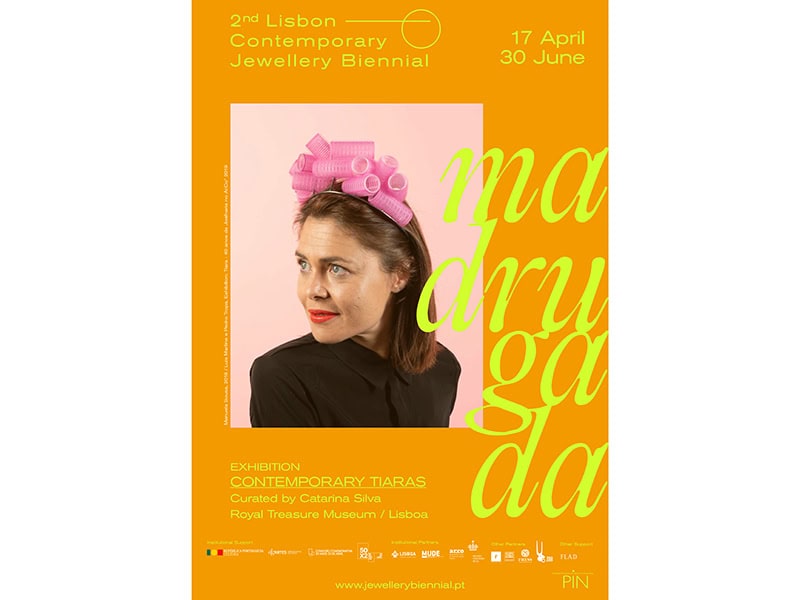
Manuela Sousa’s joyously irreverent tiara consists of prettily assembled large pink plastic hair rollers. It nods to a bygone era in so many ways.
The contemporary tiaras offer an irreverent challenge to the museum’s traditional jewels. A few chosen ones have been allowed into the vault’s inner sanctum. These include Ted Noten’s chrome tiara and helmet, made in 2002. He imagined it as a protective headpiece for Máxima Zorreguieta, to celebrate her wedding when she became crown princess (now queen consort) of the Netherlands.
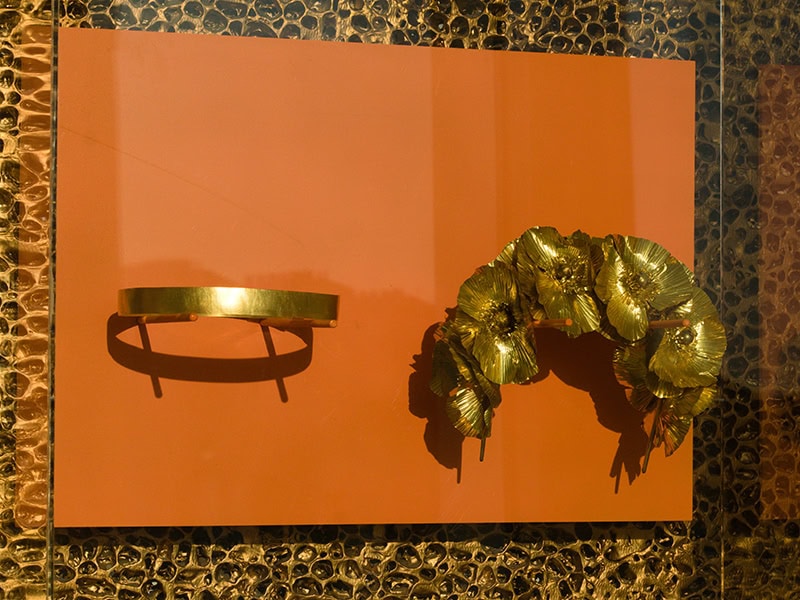
The show also includes gentler works that embrace the beauty and decorative idea of the tiara, though with a sly wink. There is the brass Opium Poppy Crown, by Christopher Thompson Royds. Lin Cheung’s Pearl Thing—Halo is made of large freshwater pearls. It hangs on a heavy steel nail, which gives it a touch of harshness.
Alongside these two exhibitions, the biennial will continue through a colloquium. It aims to reflect on the way in which jewelry expresses and represents politics and power and the importance of democracy and its rights.
The organizers want the colloquium to offer the opportunity “to think and debate these and other aspects of the connection between jewelry and politics, power and policy in a variety of different contexts.”

The three-day colloquium, which begins June 27, 2024, includes Cindi Strauss on “Hear Me Now! American Political Jewelry 1965–1980”; Rosa Maria Mota on “The Power of Gold Adornments”; and Ben Lignel, who has a dream to establish a free university for crafts, cuisine, and social justice, on “Radical Facilitation: A Discussion.”
Also on the schedule: Lin Cheung and Manuel Vilhena will teach masterclasses. There are other exhibitions. And galleries, artists’ collectives, and schools are joining the program with their own initiatives.
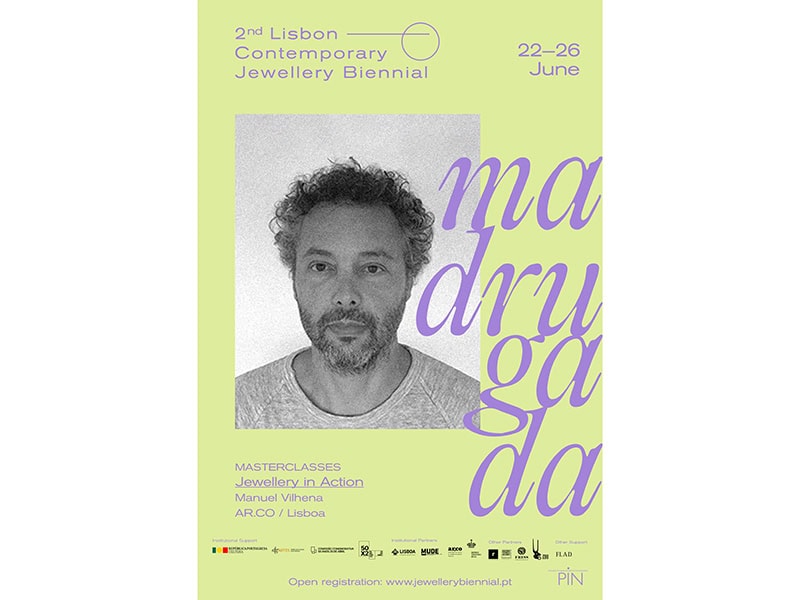
The organizers of “Madrugada” want to show the vitality of the political expression of contemporary artistic jewelry and to explore all the complexities within that artistic engagement with the world.
Additional articles about the Lisbon biennial
From the Financial times, also by Caroline Palmer, here.
We welcome your comments on our publishing, and will publish letters that engage with our articles in a thoughtful and polite manner. Please submit letters to the editor electronically; do so here.
© 2024 Art Jewelry Forum. All rights reserved. Content may not be reproduced in whole or in part without permission. For reprint permission, contact info (at) artjewelryforum (dot) org




